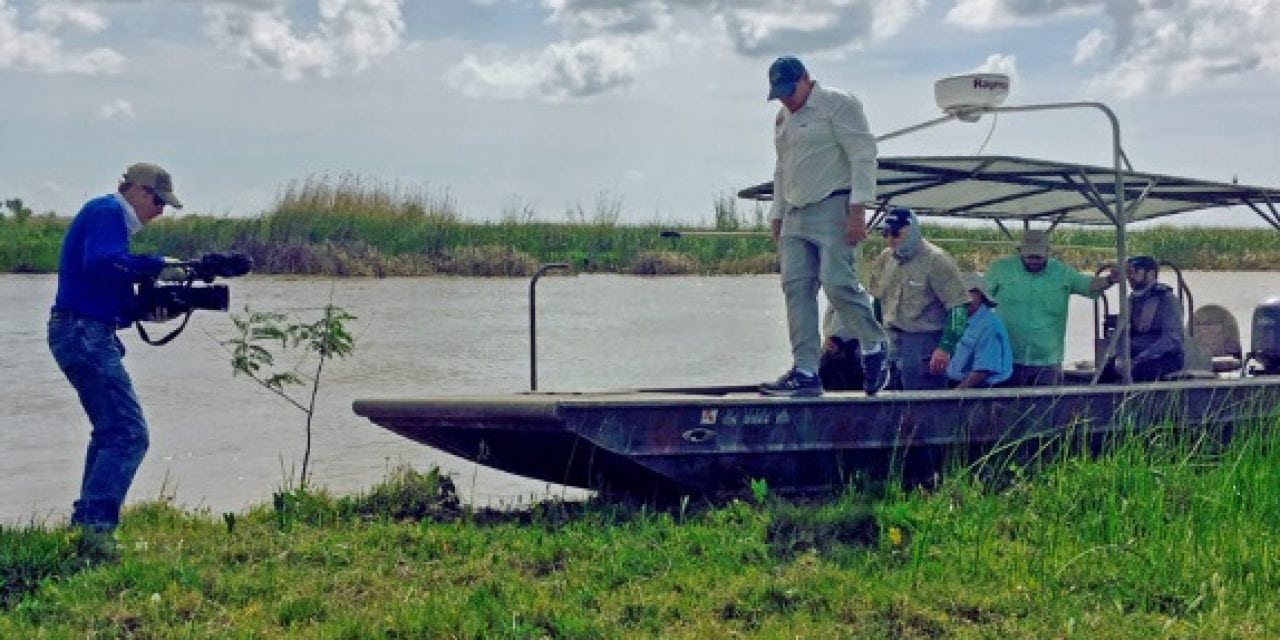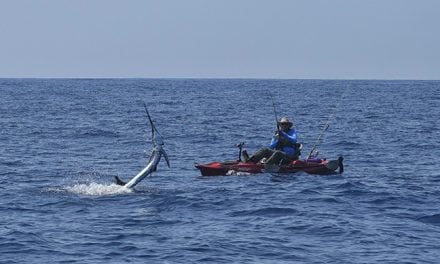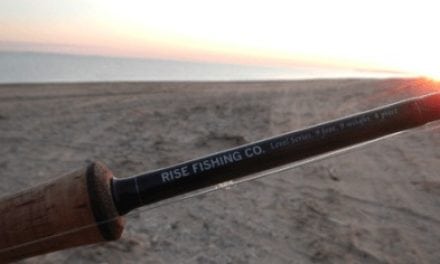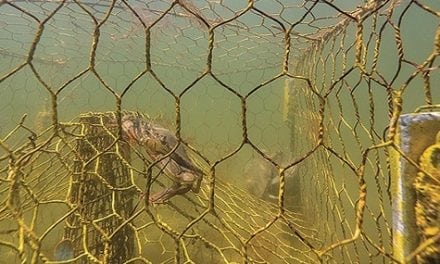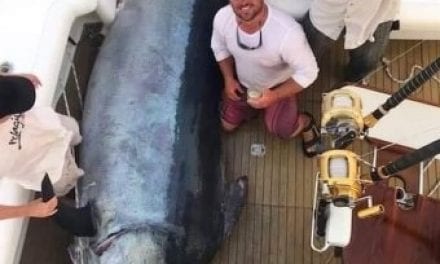More than 25 years ago, Captain Ryan Lambert navigated a winding maze of bayous and bays to bring clients from the lodge at Cajun Fishing Adventures in Buras, Louisiana, to prime saltwater fishing and duck hunting areas. Today, he can point the bow of his boat south and barely turn the steering wheel at all.
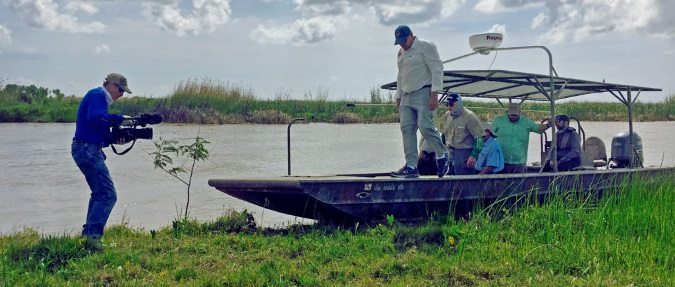
To prove just how quickly land is being lost in Louisiana’s hunting and fishing paradise, Lambert pulled out his phone and showed me a photo he snapped of his GPS screen on a recent trip to productive redfish waters. It showed his boat sitting on land, but he certainly hadn’t run ashore. His electronics just can’t keep up as land is eroding and being swallowed by sea level rise all at once.
Solutions are in the works, and I was visiting my colleague Chris Macaluso to view one of them, a sediment diversion project planned for the Barataria Basin before doing a little fishing on the east side of the Mississippi River. Outdoor and environmental writers and TV hosts from across Louisiana were also there to witness the drastic consequences of cutting off the sediment supplies to the marshes of the Mississippi, the primary culprit in the loss of nearly 2,000 square miles of coastal wetlands.
The brown, murky water blocked us from seeing the floor of Barataria Basin, which is covered by loose soils made of rotting vegetation, rather than the layers of sediment once deposited by annual spring flooding of the Mississippi. The resulting land loss threatens species like pintails, teal, redfish, and speckled trout, which has implications for our days afield and on the water.
This diversion project aims to reverse this land loss and improve habitat for the species we love.… Click To Tweet
The Mid-Barataria Sediment Diversion project aims to reverse this land loss and improve habitat for the species we love. It was approved in 2012 by the Louisiana state legislature as part of a comprehensive plan to restore Louisiana’s wetlands and protect coastal communities. With 75,000 cubic feet of water and sediment diverted every second during high-river periods, the benefits from this diversion would be swift—reinstituting fish and waterfowl diversity, especially for game species like largemouth bass, redfish, speckled trout, teal, and gadwalls, and providing a buffer from catastrophic storms like Hurricanes Katrina and Rita.
But the environmental review process is delaying construction, just as the Louisiana coast is more vulnerable than ever. So, the need to expedite the environmental permitting procedures is essential to reversing land loss and improving fish habitat.
Several reporters and I stuck around long enough to experience what could be the future of Barataria Basin for recreational fishermen. On the east side of the Mississippi, I was hauling fish after fish into the boat after only one or two casts. Where it was tough to imagine (never mind see) fish in the basin’s straight, murky corridors between the barges, these marshes and inlets were hiding all sizes of specks and redfish. Within a few hours, I’d caught my limit—15 redfish over 16 inches, with one over 27 inches, and 25 speckled trout.
But days like this are at stake where marshes are critical to the coastal ecosystem and yet disappearing at an alarming rate. It’s critical that projects like the Mid-Barataria Sediment Diversion move forward.
VIDEO: Catch the segment of our tour from the Paradise Louisiana television show here.
The post Reversing Land Loss and Improving Fish Habitat in the Bayou appeared first on ODU Magazine-North America's #1 Digital Fishing Magazine.

